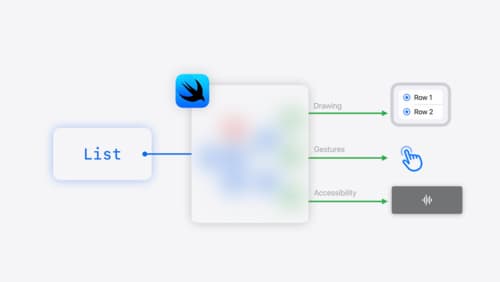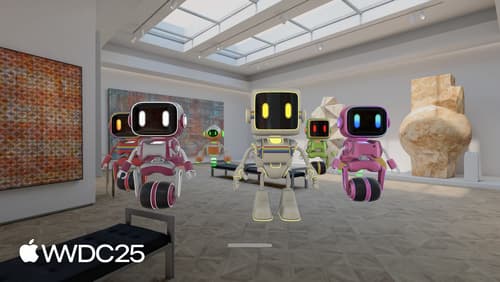architecture in swiftui
Asked on 2025-07-12
1 search
SwiftUI architecture is built on a foundation of declarative, compositional, and state-driven views. Here are some key aspects of SwiftUI's architecture as discussed in the WWDC sessions:
-
Declarative Syntax: SwiftUI allows you to describe what you want your user interface to look like, and it handles the rendering. This is achieved through a declarative syntax where you define views and their relationships. For example, you can create a horizontal stack with a label, spacer, and text using a simple declarative syntax. This approach is highlighted in the SwiftUI essentials session.
-
Compositional Views: SwiftUI uses composition extensively. Views are composed of smaller views, and container views like
HStackandVStackare used to arrange them. This compositional nature allows for easy rearrangement and experimentation with layouts, as discussed in the SwiftUI essentials session. -
State-Driven Architecture: SwiftUI views are state-driven, meaning they automatically update when the underlying state changes. This eliminates the need for boilerplate code to keep the UI in sync with the data model. The session on SwiftUI essentials explains how SwiftUI maintains a representation of the UI and updates it as data changes.
-
Interoperability: SwiftUI is designed to work seamlessly with other frameworks like UIKit and AppKit. You can use
UIViewRepresentableto integrate UIKit views into SwiftUI andHostingViewControllerto embed SwiftUI views in UIKit. This interoperability is a cornerstone feature of SwiftUI, as mentioned in the SwiftUI essentials session. -
Cross-Platform Capabilities: SwiftUI is available across all Apple platforms, allowing developers to share code and create consistent experiences. The session on SwiftUI essentials highlights how SwiftUI's capabilities extend to any platform, enabling code reuse and native app development across different devices.
These architectural principles make SwiftUI a powerful tool for building modern, responsive, and maintainable user interfaces across Apple's ecosystem.

Platforms State of the Union
Discover the newest advancements on Apple platforms.

SwiftUI essentials
Join us on a tour of SwiftUI, Apple’s declarative user interface framework. Learn essential concepts for building apps in SwiftUI, like views, state variables, and layout. Discover the breadth of APIs for building fully featured experiences and crafting unique custom components. Whether you’re brand new to SwiftUI or an experienced developer, you’ll learn how to take advantage of what SwiftUI has to offer when building great apps.

Meet SwiftUI spatial layout
Explore new tools for building spatial experiences using SwiftUI. Learn the basics of 3D SwiftUI views on visionOS, customize existing layouts with depth alignments, and use modifiers to rotate and position views in space. Discover how to use spatial containers to align views in the same 3D space, helping you create immersive and engaging apps.
